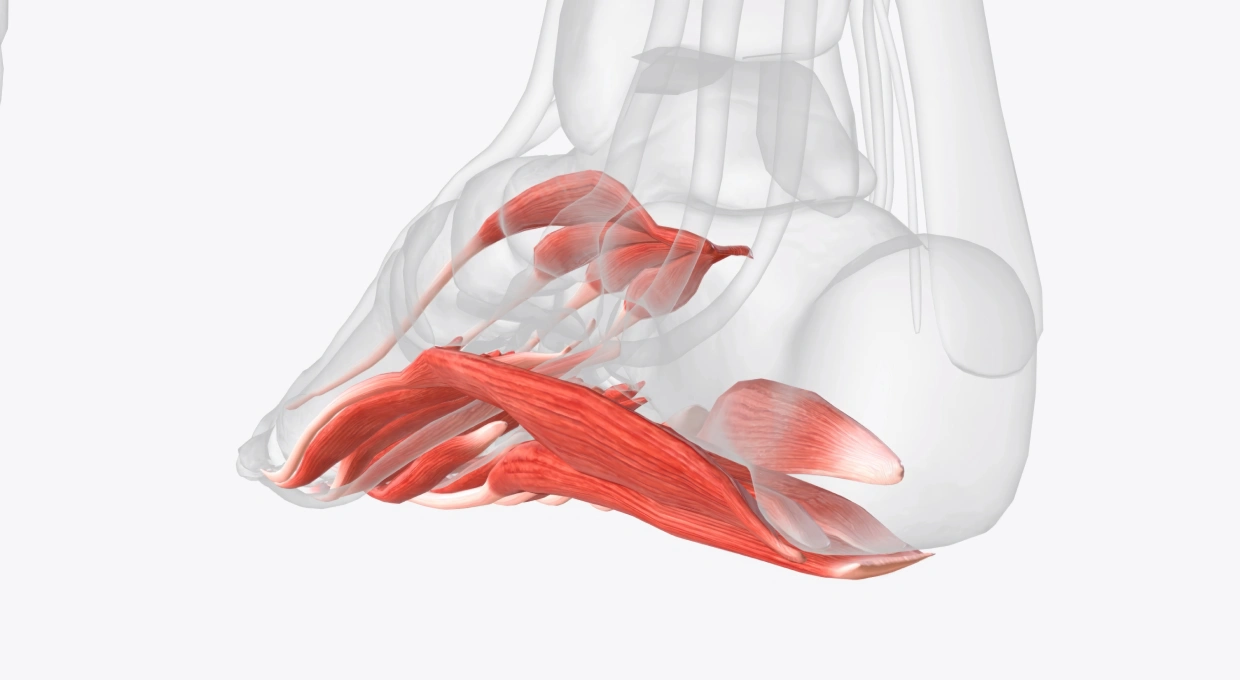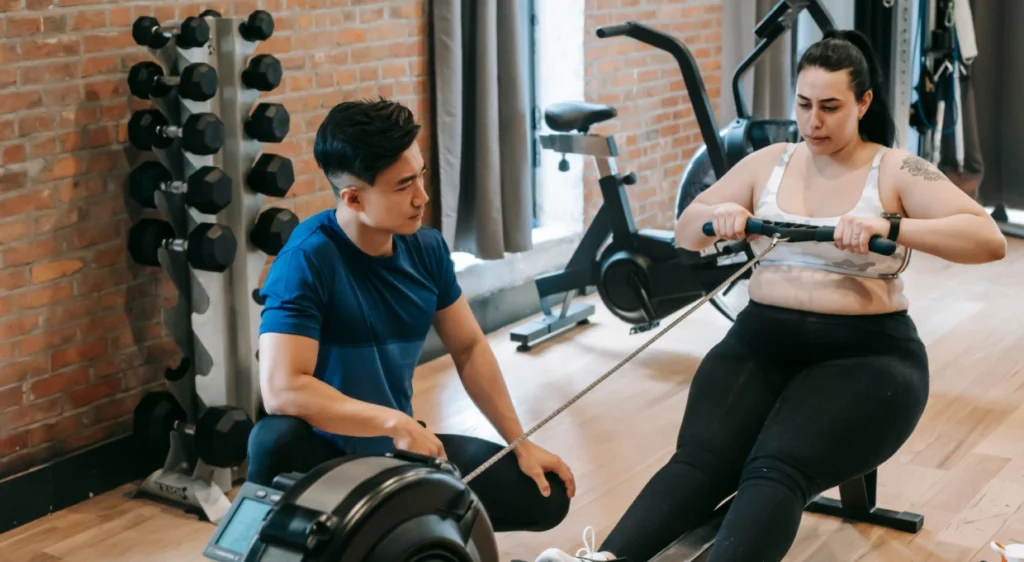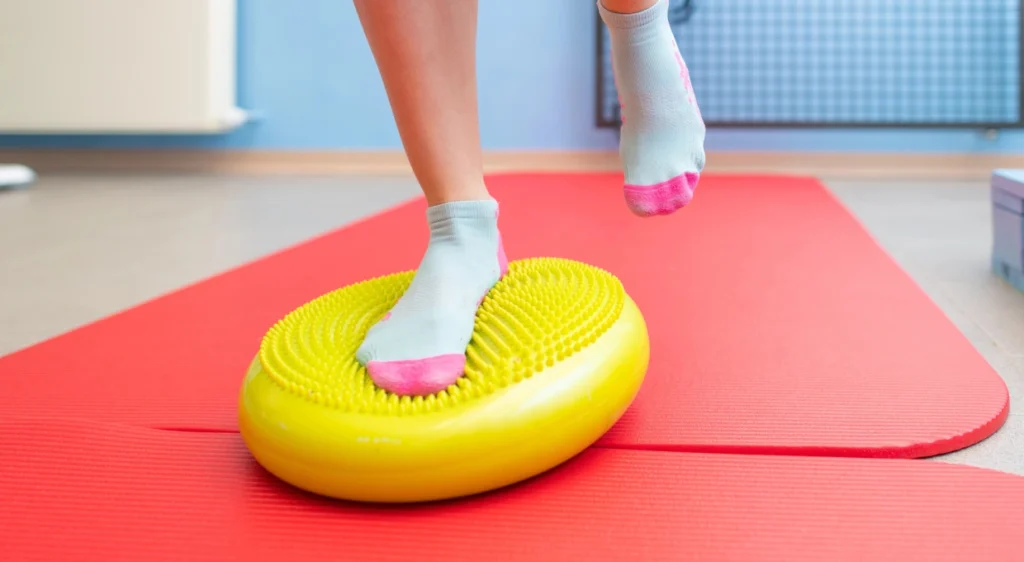The foot is a biomechanical marvel. It supports the entire weight of the body, adapts to all types of surfaces, absorbs impacts, and allows us to walk, run, jump and maintain balance. All this would not be possible without a complex network of muscles working in a coordinated manner. Butwhat exactlyare the muscles in the foot, what functions do they perform, and how does their condition influence our overall health?
In this article, from Clínica San Román, we explain in detail what the muscles of the foot are, how they are organized, what functions they perform and why it is essential to keep them healthy and active. A useful guide whether you have discomfort in your feet, or if you do sports or simply want to take care of your postural health.
The foot: a functional and complex structure
Each of your feet is made up of:
- 26 bones
- 33 joints
- More than 100 muscles, tendons and ligaments
Thanks to this structure, the foot can perform complex movements: flexion, extension, rotation, adaptation to the terrain, propulsion, etc. The musculature of the foot performs essential functions, such as maintaining the plantar arch, toe movement and stabilization of the body during walking.
When any of these muscles is weakened, tight or injured, the foot loses its efficiency, which can lead to problems such as flat feet, plantar fasciitis, hammertoes, bunions or even injuries in other areas such as the knees or spine.
What muscles are in the foot?
The muscles of the foot are divided into two main groups:
1. Extrinsic muscles of the foot
These are the muscles that originate in the leg and whose tendons insert into the foot. Although they do not originate in the foot, they are crucial for its movement and stability.
Main extrinsic muscles:
- Anterior tibialis: flexes the foot upward and helps maintain the arch.
- Posterior tibial: important in the inversion of the foot (inward rotation) and support of the plantar arch.
- Peroneus longus and peroneus brevis: responsible for eversion (outward rotation) and stabilizing the ankle.
- Flexor digitorum longus: allows flexion of the four lesser fingers.
- Flexor hallucis longus: essential for impulsion when walking or running.
- Long extensor of the fingers: helps to extend the fingers.
- Extensor hallucis longus: raises the hallux (first toe).
- Gastrocnemius and soleus: calf muscles which, although not of the foot, are involved in propulsion of the gait.
These muscles act together to generate strength, propulsion, balance and cushioning with each step.
2. Intrinsic muscles of the foot
They are those that originate and end inside the foot. Although smaller, they are essential for fine movements, precision of support, posture and the health of the plantar arch.
They are grouped into several layers and regions:
A) Muscles of the dorsum of the foot (upper part)
- Extensor digitorum brevis
- Extensor digitorum brevis of the great toe
Its function is to help extend the toes and stabilize the forefoot during stance phase.
B) Muscles of the sole of the foot
Distributed in four layers, from the most superficial to the deepest:
- First layer:
- Big toe abductor
- Flexor digitorum brevis
- Fifth finger abductor
- Second layer:
- Plantar square
- Lumbricals (located between the tendons)
- Third layer:
- Flexor digitorum brevis great toe
- Adductor of the great toe
- Flexor digitorum brevis of the fifth finger
- Fourth layer:
- Dorsal and plantar interossei, which control the separation and approach of the toes.
These muscles support the plantar vault, participate in the correction of the stride and facilitate impulsion during walking.

Why is it important to know and care for them?
Because a weakened or poorly trained musculature can be the root of multiple ailments, such as:
- Plantar arch drop (flatfoot) due to posterior tibial failure
- Plantar fasciitis due to flexor digitorum brevis overuse
- Bunions or hallux valgus due to big toe adductor dysfunction
- Claw fingers due to shortening of the long flexors.
- Heel or metatarsal pain due to load distribution imbalance
In addition, when the foot musculature is altered, the ascending chain is also affected: ankles, knees, hips and even the lumbar spine.
What causes these muscles to weaken?
- Continued use of very stiff or high heeled footwear
- Lack of physical activity
- Always walk on flat and hard surfaces.
- Sedentary lifestyle
- Neuromuscular diseases
- Injuries or prolonged immobilization
Aging also plays a role, as we lose muscle mass and flexibility over the years, which can affect balance and increase the risk of falls.
How to strengthen and care for the foot muscles?
At Clínica San Román, as specialists in clinical podiatry, biomechanics and surgery, we recommend including specific strengthening and mobility routines for the foot:
Recommended exercises
- Walking barefoot on varied surfaces (house, lawn, sand)
- Picking up objects with toes (such as a towel or marbles)
- Roll a tennis ball or bottle under the plantar arch.
- Achilles tendon and plantar fascia stretches
- Walking on tiptoes and heels alternately
Other recommendations
- Wear comfortable and functional footwear, with good support and room for the toes.
- Avoid high heels or narrow footwear in the forefoot.
- Have regular podiatric check-ups, especially if you run, walk a lot or feel recurrent discomfort.
- Consider the possibility of using customized insoles, designed to redistribute loads and activate the correct musculature for each stride.
Evaluation at Clínica San Román
In our clinic we perform biomechanical gait studies that allow us to analyze how the foot muscles behave in motion. This helps us to detect functional imbalances, overloads or atrophies that may go unnoticed in a static review.
Depending on the results, we design a customized plan that may include:
- Custom orthopedic insoles
- Postural reeducation and exercises
- Surgical evaluation if there is structural deformity
- Footwear recommendations and household guidelines
Conclusion: to understand what muscles are in the foot is to take care of your whole body.
Although you can’t see them, the muscles in your feet are constantly working to keep you balanced, propel you through each step and protect your joints. So now that you know what muscles are in your foot, it’s a good time to give them the care they deserve.
At San Roman Clinic we work to prevent, diagnose and treat comprehensively any foot condition. If you notice pain, fatigue when walking or alterations in your stride, make an appointment with our specialized team.
Take care of your feet and you will be taking care of your whole body. We are waiting for you.



